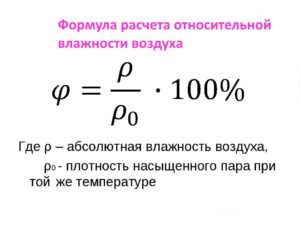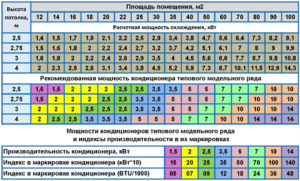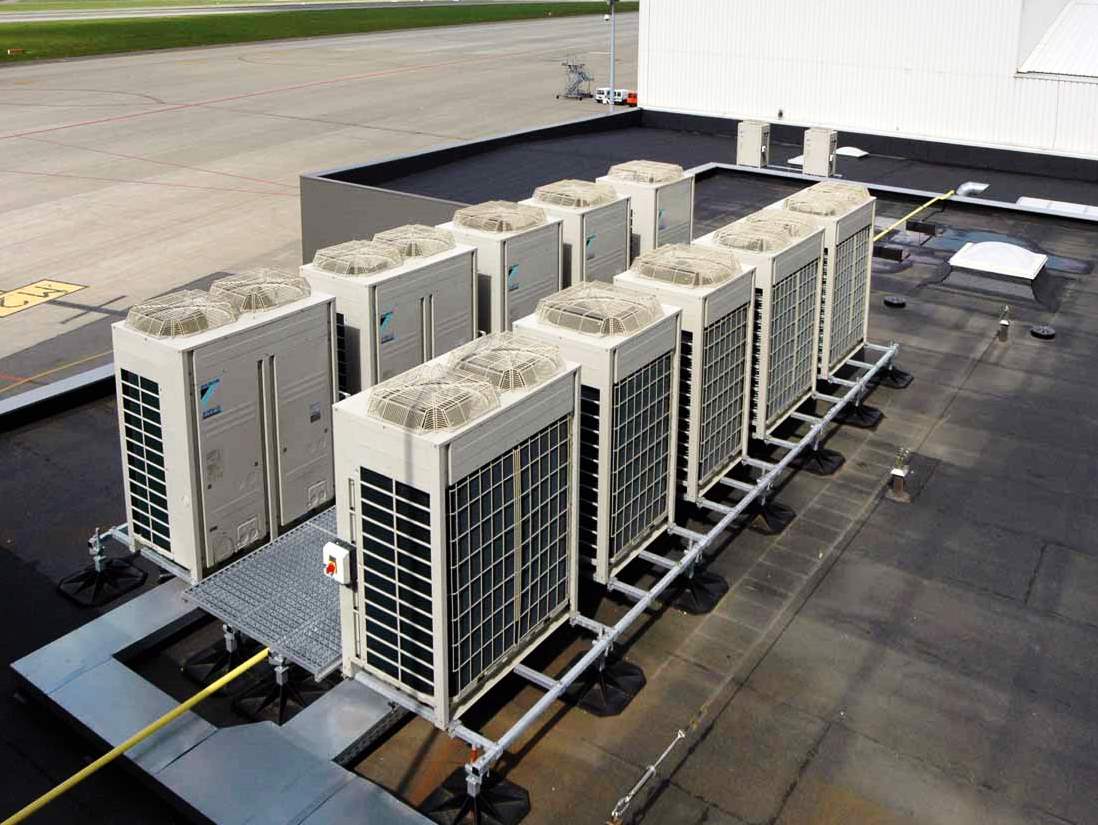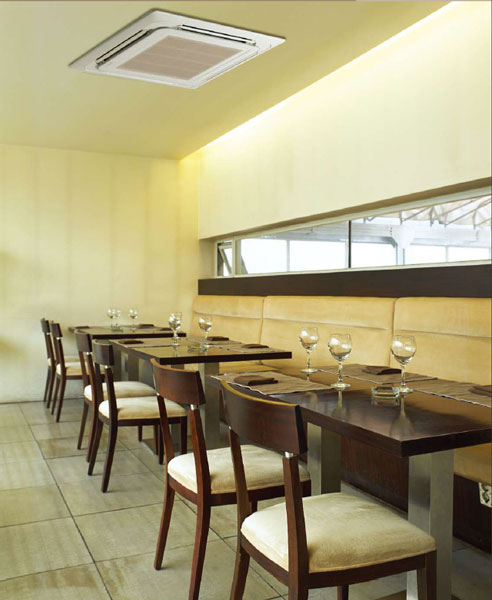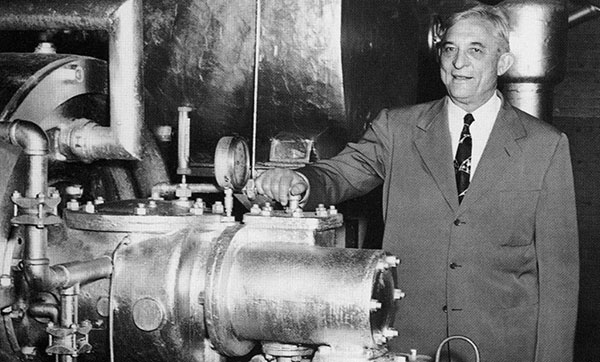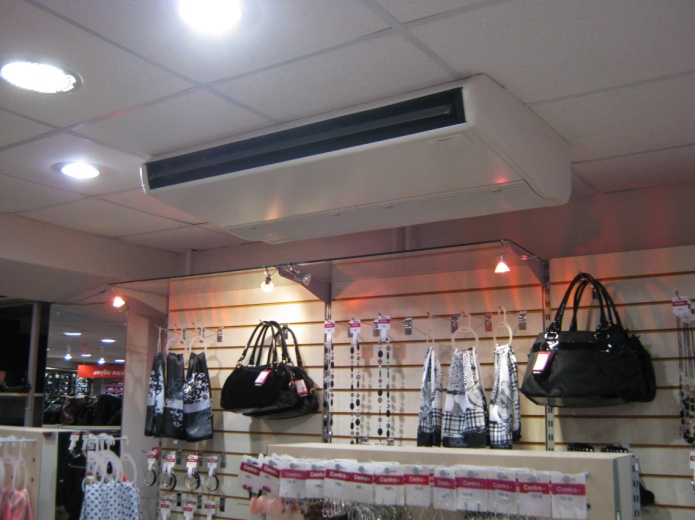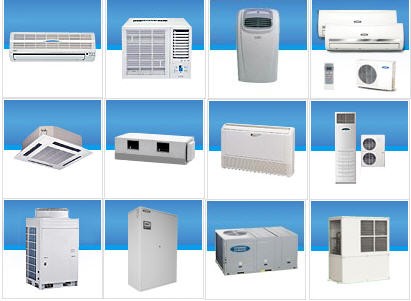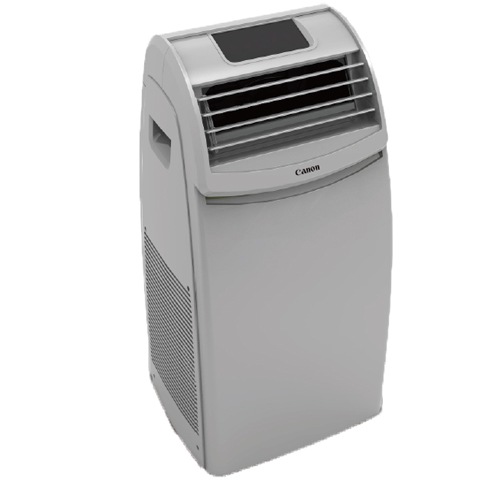In large rooms filled with many heat sources, the installation of air conditioners is irrational. To achieve comfortable conditions with less energy consumption, the use of fan coil units allows. These are heat exchangers consisting of a fan and a radiator, inside which water circulates. Before purchasing the equipment, its capacity is calculated. Depending on the degree of preparedness of the consumer, the calculations are carried out in an academic or simple approximate way.
How to choose the right fan coil power
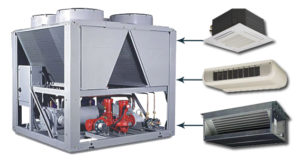
The chiller-fan coil system is one of the climatic equipment options for creating a comfortable microclimate in office, commercial, industrial and domestic premises. The equipment is designed for two modes: cooling in the warm season and heating in the cold season. For multi-zone air conditioning systems, a combined option is recommended: the heat and humidity load falls on the fan coil units, and ventilation ensures the cleanliness of the air.
The main elements of the system: chiller - a machine for generating cold; and fan coil units - air conditioners or fan coils, which are heat exchangers. The heating medium is water or an ethylene glycol mixture. The hydraulic unit circulates the fluid in the pipeline. The purpose of fan coil units is to bring the air temperature in the room to the specified parameters.
The principle of operation of the device: the fan blows air through the heat exchanger. The cold coil reduces the flow temperature. Cooled air returns to the room. The process is accompanied by the loss of condensate, which is discharged to the drain.
Fan coil selection
The air conditioner is selected according to the total refrigerating capacity. Cooling costs are higher than heating power, so the calculation is based on maximum performance. Calculations require taking into account many parameters that affect the amount of heat and moisture released in the room:
- Receipt of sensible heat into the room:
- a) the location of the room and windows relative to the cardinal points;
- b) the number of people (with average physical activity, an adult generates 130-150 watts of heat);
- c) material, thickness and quality of wall and floor insulation;
- d) the power of the lighting fixtures;
- e) heat generated during the operation of household appliances, computers.
- The climatic conditions are typical for the region in terms of temperature and humidity.
- Refrigerant temperature in the chiller-fan coil system.
- The presence of ventilation, the amount of fresh air flow.
- The functional purpose of the room.
Fan coil calculation methods
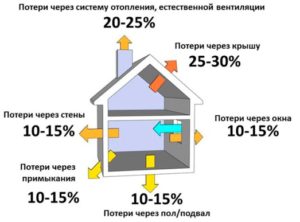
Having determined the total heat load in the room, they begin to calculate the power of the fan coil. Three calculation techniques are used. They are distinguished by the complexity of implementation and the accuracy of the results.
Academic
The most accurate calculation option that takes into account all possible parameters. The academic method involves a long and complex calculation process; a beginner will need 8-10 hours to choose a fan coil for a room with an area of 25-30 sq. m. The calculations carried out are similar to the studies carried out for the heat exchange processes of the air conditioning system. For work you will need:
- thermal conductivity coefficients of fencing materials;
- indicators of heat transfer of structural materials to the environment;
- moisture content and enthalpy (components of the id of the diagram).
- relative humidity;
- temperature;
- moisture content (amount of steam in 1 kg of air);
- enthalpy (amount of heat in 1 kg of air).
By connecting all the available indicators with lines, a diagram of the air condition is obtained. It is used by specialists to calculate air heating and a fan coil.
Refined
Technicians involved in the design of air conditioning systems carry out calculations based on the averaged values of the reference values. The method is less accurate than the academic one, but it gives a fairly reliable result. The calculation is based on the effect of humidity on the power of the fan coil units. Manufacturers in the characteristics indicate two performances: explicit and full. These parameters require explanation:
- Apparent performance of the device - takes into account all heat inputs in the room without correction for humidity.
- The total performance of the fan coil is the cold power used to compensate for sensible and latent heat. The second parameter is the heat of condensation of vapor into liquid. It is calculated using an id diagram or special tables.
With low air humidity, latent heat is up to 20%. Add this number to the apparent performance to get the full. With an increase in the humidity index, the proportion of latent heat increases to 50-60%.
Approximate or approximate
- for offices with office equipment and computers, an air conditioner-closer with a capacity of 150 watts for each 1 sq. m;
- a living space with a ceiling height of 2.7-3 m needs a fan coil with a cold performance of 100 watts per 1 sq. m area.
For example: the area of a room in an apartment is 20 sq. m - Q = 100 X 20 = 2000 W or 2 kW.
The final power is determined without taking into account the latent heat. In regions with a dry climate, the error is up to 20%, and with high humidity (80-90%), the error is within 50%.
Possible difficulties
Some HVAC equipment manufacturers indicate the cooling capacity of the fan coil not in the usual kW, but in BTU. British Thermal Unit stands for British Thermal Unit. The unit ratio is 1 kW = 3412 BTU / h.
The power of the devices for ease of orientation of buyers is indicated in rounded. For example: 7000 BTU / h = 2100 W.
Features of calculating a fan coil
Manufacturers' data on the production of cold air conditioner-coil unit are tied to standard temperature indicators:
- dry bulb 27 °;
- wet bulb 19 °;
- water at the fan coil inlet 7 °.
The variable factors include the fan speed, high is indicated in the characteristics. There is also medium and low. Among the factors, changing which affects the performance of the fan coil unit:
- inlet water temperature;
- air flow (fan speed);
- the amount of water passing through the fan coil;
- indoor air temperature.
Self-calculation of the electrical power of fan coil units for an office or a production workshop can cause serious difficulties. This work is trusted by specialists. An online calculator on sites related to climate technology helps with a refined calculation. For domestic use of the device, an approximate calculation is suitable.

